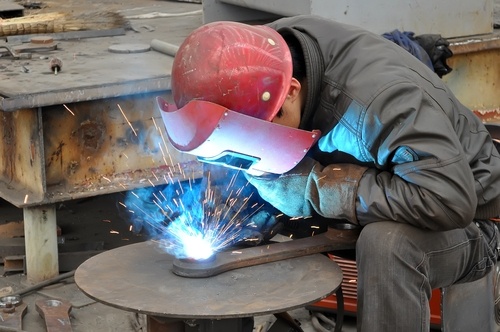
Increasingly, companies are realizing that they need to have a contingency plan for staff shortages. This is especially true in areas like the Midwest, where unemployment is extremely low and there is a high need for skilled manufacturing workers.
Typically when companies develop business continuity plans, they do so with the intent to continue operations in the event of a disaster at varying levels, from a pandemic like the coronavirus, short-term localized incidents or events, to longer term facility-wide or regional incidents that can impact operations.
However, we are starting to see an increasing need for contingency staffing solutions for companies that simply can't source the manufacturing labor they need through traditional staffing methods which is putting their business at risk of losing customers due to long delays on shipping out their product. There comes a point where they simply must implement a different staffing strategy to ensure production deadlines are met and customers are not lost.
According to Forbes, the past few years have seen an emerging problem in the skilled trades. A combination of factors, including the outsourcing and offshoring of labor, an uncertain economy, quickly-advancing technology and a rapidly aging workforce, has led to a shortage of qualified welders, electricians and machinists, as well as a number of other professions. It is also clear that these shortages will not disappear anytime soon.
In 2012 alone, 53% of skilled tradesmen in the United States were at least 45 years old, and another 18.6% of them were between 55 and 64, the expected age of retirement, according to EMSI. Not only do those figures compare negatively with the overall labor force, where those respective percentages stood at 44% and 15.5%, but their ranks may not be replenished at the rates they need to be.
An Aging Workforce is Contributing To The Skills Gap & Creating Worker Shortages
The skilled trades themselves encompass twenty-one different job descriptions, and the rapid "evaporation" of this workforce has many consequences to manufacturing in the US. The loss of production that can result from losing just one key employee with specific and hard-to-replace skills can be significant. Add to this the fact that a diminishing workforce can extend the hiring process by weeks or even months, makes the ability to quickly replace these workers essential.This is especially pertinent when considering how few of today's students are entering various skilled trades. American high schools have largely shifted their focus toward landing students in four-year colleges and away from vocational schools, reducing the number of young workers that will soon enter the trades. One way for companies to combat this trend in their contingency plans is to develop company initiatives to drive interest and even potential training or scholarships for students who are looking to learn these high value skills.
Additionally, continuity plans for strategically timed equipment upgrades and replacement can also make a difference, as new technology frequently reduces headcount and increases productivity. While these methods aren't fail-safe for long-term production, they can serve as important stopgaps that could buy a company more time in the process.
Contingency Planning For Labor Shortages
Another trend that is quickly impacting the manufacturing and skilled trades field is the re-balancing of the manufacturing market, according to The Wall Street Journal. While there's a positive aspect of this market direction, where American companies are increasingly investing resources in bringing manufacturing back to the US and pulling away from outsourcing and foreign production, it is also expected that prices will rise somewhat in response.One hiring expert quoted by the news source was quick to point out that this doesn't indicate a major sea change in manufacturing itself. However, between increasing labor needs and decreasing resources, business continuity planning focused on labor will be even more mission-critical in order to reduce uncertainties that may result.
Determining the Right Manufacturing Staffing Solution
Considering its growing importance, a business continuity plan must make potential skills gaps that can negatively impact the business a priority, especially those that deal with manufacturing or skilled trades. Consultants are beginning to address employment levels as a path to gain competitive advantage, and adding offerings that help client companies develop continuity strategies that address maintaining production goals in light of these negative trends.
Other resources can also help. Local colleges and technical schools can provide insight, and by using internships and other vehicles, help fill in some of these gaps. Until recently, temporary staffing agencies have traditionally been relied upon to provide seasonal support to manufacturers but these businesses are not immune to the same regional labor shortages that are impacting businesses in low unemployment states. In areas with limited human resources, local temporary agencies are increasingly providing unskilled labor which increases turnover, costs, and does not provide the operational stability companies need to keep production on scheduled.
Manufacturing & Light Industrial Contingent Staffing Solutions for Labor Shortages
An increasing number of companies, especially those within the Midwest, are turning to contingency staffing companies like MADI to source skilled labor from outside of the region and provide a fully-managed workforce solution which includes the following:
- Logistics support for mobilizing workers from across the U.S. to the job site
- Onboarding of the workforce efficiently for quick acclimation and productivity
- On-site Management to ensure workers arrive on-time as a group each day prior to their scheduled shift and to provide more structure to the entire process
Bringing in more skilled workers with manufacturing experience from outside of the state cuts down on the common issues with local staffing agencies that are attempting to source workers from same area with limited resources due to low unemployment:
- High-turnover
- Long training periods for unskilled and inexperienced workers
- Unreliable workers that may or may not show up or show up late
- Management training fatigue due to high-turnover
By sourcing labor nationwide, more skilled workers can provided as well as larger workforces for temporary, contract or seasonal staffing needs.
Budget and customer expectations must also be considered. Disruptions due to shortfalls in skilled labor can hurt the bottom line and shareholder value, as can high turnover from local staffing agencies. It is in the best interest of the business to invest in and have contingency plans in place so at the first sign of any shortfalls in skilled labor, there is a process that can be implemented as seamlessly and quickly as possible.







Comments
Currently, there are no comments. Be the first to post one!